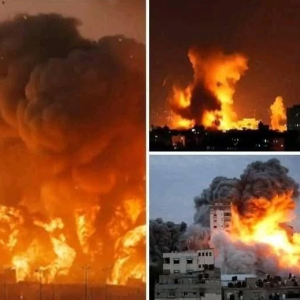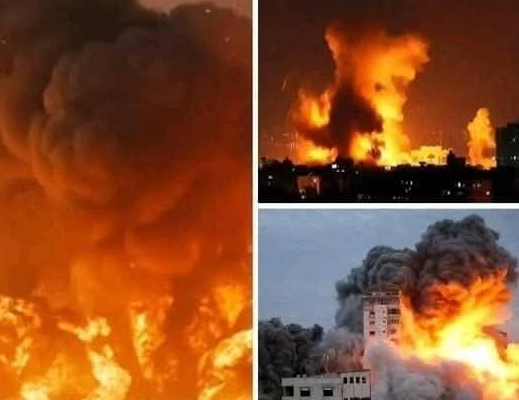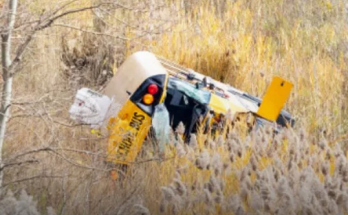Inferno in Pamplona Alta: Unraveling the Devastation and the Road to Recovery
BREAKING: At least 300 homes estimated damaged or destroyed after large fire in Pamplona Alta, Peru; blaze contained.
The shocking headline, stark in its simplicity, only begins to convey the human tragedy that unfolded in the informal settlement of Pamplona Alta, located in the southern cone of Lima, Peru. A devastating fire, propelled by wind and fueled by the densely packed, often precarious materials of the community, ripped through the neighborhood, leaving behind a scorched landscape and a population abruptly stripped of shelter, possessions, and security. Initial reports, swiftly confirmed by local authorities, tragically estimated that at least 300 homes were either damaged beyond repair or entirely reduced to ash. This is not merely a number; it represents hundreds of families, thousands of individuals, whose lives were irrevocably altered in a matter of hours, marking one of the region’s most destructive urban blazes in recent memory. The disaster has instantly transitioned from an emergency response operation to a massive, protracted humanitarian crisis, highlighting the extreme vulnerability of marginalized communities worldwide to such catastrophic events.
The Anatomy of a Rapid Catastrophe
Pamplona Alta, like many informal settlements on the outskirts of major cities, is characterized by challenging topography and construction methods that tragically enhance fire risk. Homes are often built quickly, utilizing lightweight, combustible materials such as wood, thin plasterboard, and plastic sheeting. Crucially, the settlement’s infrastructure features narrow, labyrinthine alleyways, not only inhibiting resident evacuation but also rendering professional firefighting efforts agonizingly difficult. In the crucial initial moments of the conflagration, when containment is most vital, conventional fire trucks and large equipment simply could not navigate the tight, unpaved spaces.
Eyewitness accounts paint a terrifying picture of the fire’s ruthless speed. Once ignited—the cause of which remains under investigation—the blaze spread from structure to structure with terrifying efficiency. Strong winds, common in the elevated parts of the area, acted as a bellows, driving flames and sending deadly embers soaring across gaps that would ordinarily halt a fire’s progress. One resident, displaced with his family, described the scene: “It was not just fire, it was a beast of smoke and heat that ate everything in its path. We had minutes, perhaps less, to grab our children and run. Everything else—years of work, memories, documents—is gone.”
The emotional and psychological toll is immeasurable. For the community of Pamplona Alta, a home is more than just a structure; it is the culmination of immense personal sacrifice, often built brick by brick or board by board over years, representing a family’s foothold in the city. The destruction of three hundred such homes means the instant erasure of social, economic, and historical foundations.
The Immediate Response and Humanitarian Pivot
The first responders faced an unprecedented challenge. Local firefighters, assisted by police and volunteers, worked tirelessly to establish a defensive perimeter, often having to rely on human chains to pass buckets of water and clear paths where fire hoses couldn’t reach. The eventual containment of the blaze, confirmed after hours of grueling work, was a victory against overwhelming odds, but it marked only the end of one phase of the crisis.
The immediate aftermath was dominated by humanitarian concerns. Hundreds of families were instantly rendered homeless, congregating in temporary shelters set up in community halls, schools, and open spaces. The basic needs were vast and immediate: clean water, food, blankets, and essential medical care for those who suffered smoke inhalation or minor burns. The spirit of local solidarity shone through the despair, as neighboring communities and aid organizations swiftly mobilized, setting up collection points for clothing, non-perishable food, and financial donations. Local and national government agencies were tasked with coordinating aid distribution and, crucially, commencing the arduous process of damage assessment to determine which families qualify for emergency housing and rebuilding assistance.
However, the sheer scale of the disaster quickly outstripped local capacity. The destruction of 300 homes places thousands of people in need of sustained, long-term support. While the immediate crisis of shelter has been addressed with temporary tents and communal living arrangements, the process of rebuilding an entire neighborhood is a monumental undertaking, fraught with legal, logistical, and financial complexities.
The Long and Difficult Road to Rebuilding
The challenges facing the residents of Pamplona Alta are profound and multi-layered.
First, there is the issue of legal land tenure and reconstruction. Many informal settlements exist in a state of semi-legality, and while local authorities are generally supportive, the lack of formal property titles and zoning regulations can complicate the injection of government aid and, crucially, insurance claims. This structural vulnerability means that a significant portion of the recovery burden falls on philanthropic organizations and community efforts. The rebuilding cannot simply replicate the previous dangerous layout. Engineers and urban planners must now work with residents to redesign the neighborhood with fire-safety in mind: wider access paths for emergency vehicles, fire-resistant materials, and improved access to water sources for hydrants.
Second, the economic trauma is widespread. Many residents lost not only their homes but also their livelihoods, as small home-based businesses, workshops, and equipment were incinerated. The loss of personal documents—birth certificates, identity cards, educational records—further complicates life, hindering access to government services and employment. Rebuilding the community means not only restoring houses but also revitalizing the local economy and social fabric.
Third, the mental health crisis looms large. Surviving a disaster of this magnitude is deeply traumatic. Families, particularly children, grapple with the acute fear of the event itself, the grief of losing every cherished possession, and the anxiety of an uncertain future. Local health systems must be prepared to offer sustained psychological support alongside material aid, recognizing that emotional recovery often lags far behind physical reconstruction.
In the face of this adversity, the resilience of the community is their most powerful asset. The task ahead is long—likely spanning years, not months. It requires a sustained partnership between the affected families, local and national governments, international aid groups, and the global community. The fire in Pamplona Alta serves as a stark global reminder that urbanization without adequate infrastructure and safety planning creates pockets of extreme peril. For the hundreds of families picking through the ashes today, the road to recovery is long, but it is one they are determined to walk, supported by the solidarity of those who recognize that a human disaster of this scale demands a collective response. The ultimate hope is that from the ashes of 300 destroyed homes, a safer, more resilient community will rise.


